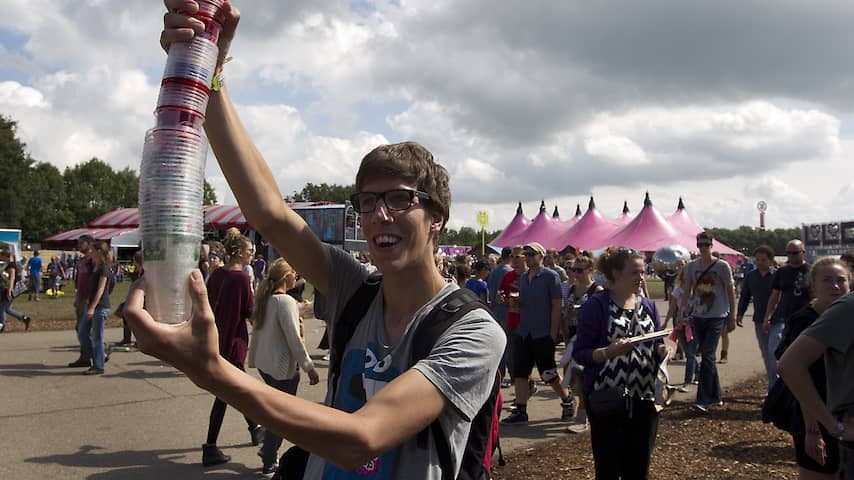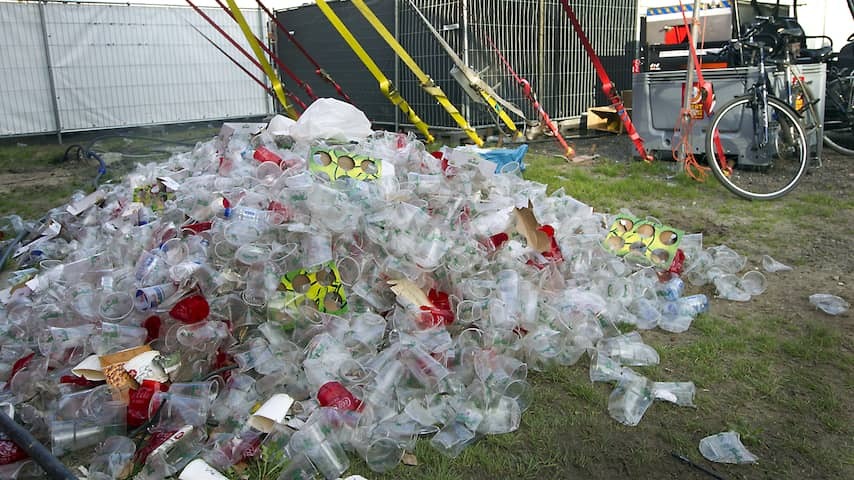
Not only organizations, but also visitors must help prevent Pollution at festivals. Without an empty cup, you of lose an extra half coin at the bar. Does that really help against plastic waste? And can you, as a visitor, do more to reduce waste?
Many festivals use a recycling system to collect plastic cups. Upon Entry, You Receive A Special Token To Get Your First Beer, And The Next Round You Return The Used Cup.
In Theory, No Cup Should Be Lying On The Ground Anymore, but in Practice It Sometimes Causes Instvenience or Irritation.
Because the big question is, or course: Where do you leave that cup once you have emptied it? Do you keep holding it, stuff it in your pocket, or do you just throw it on the ground, hoping that you will come across another trampled cup on the way to the bar?
And then there are festivals that forget to hand out a recycle token upon entry. No Innocent Mistake, With Tens of Thousands or Visitors Paying An Extra Half Coin Each.
‘The Grass is Green Again’
So the system is not perfect yet, but it does have an effect. Since 2024, Dutch Festivals Must Collect at Least 75 percent of the Cups ProVeded. The Plastic is then Made Into Granulate, which is Used, For Example, For New Cups. In 2027, the minimum will increase to 90 percent.
“The Return System is a very good development,” Says Nicky Swartjes, Who is Responsible for the food and drink supply at festivals Such as Lowlands. “We see that the grass is green again. It is no longer littered with the plastic sea of the past.”
Without the fine of half a coin, that would not have leg Possible, swartjes explains. “You really need that incentive to actual have the visitor Bring the Cup back to the bar. That’s why’s system works so well. There are always some cups last, but we have special picking teams for that. Clean again the next day. “
Festival Into the Great Wide Open Goes One Step Further. Since 2022, Both the Cups and the Eating Utensils Have Been Reusable. They are not thrown away, but washed. “Our Supplier Has a Special Washing Street for this,” Says Sustainability Expert Daan Stigter. “They are also stored there, so that they can be used again next year.”

Hard cups as the next step
“We do have a loss figure,” adds stigter. “Cups disappear at the tent, are thrown in the trash outside the festival grounds, or turn out to be not good enough in the washing street. But the reuse remains high. Such a hardcup ultimately costs a little more, butestation, thing a little Sustainability has Great Added Value. “
Hardcups Like at Into the Great Wide Open Can also be found at Larger festivals Abroad, Such as Roskilde in Denmark. But in the Netherlands we are not there yet, Thinks Kees Lamers, Sustainability Manager at Lowlands. “On paper, hardcups can be More Sustainable, If Almost No Cups Disappear and If Each Cup Lasts For Several Festivals. Frankly, I Don’t think we can yet realize two preconditions together with the visitor.”
For the Future, Lamers Sees An Even Greater Challenge. “Many recycling companies are going bankrupt. So even if we, with the festival-goers, manage to separate raw materials Such as plastic food packaging very accurately, it riains to be seen whether there there that can Process.”
The Importance of Reuse is Therefore Becoming Increasingly Important, Responds Stigter. “The more we can keep in a reuse circle, the narrower we can make the problem of recycling.”
Cup Becomes A Collector’s Item
Can we just scrap all that plastic? What if everyone just brings their own bottle or cup to refill? “Behind the bar that would cause too much hasle,” Thinks Stigter. “But I Think Castlefest is a very good example. There you buy a special earthware chalice, a child of trophy actually. You can bet that visitors keep it safe. And it is also not fossil, incredible, well -plated. I don’t.
Stigter Mainly Sees a Lot of Waste at Festival Campsites. “Think of pre-packaged cans of bear or party tent that you only use for one weekend. In the Dutch Festival culture, we take it too much for granted that campsites ultimately Become a child of waste. Area. “